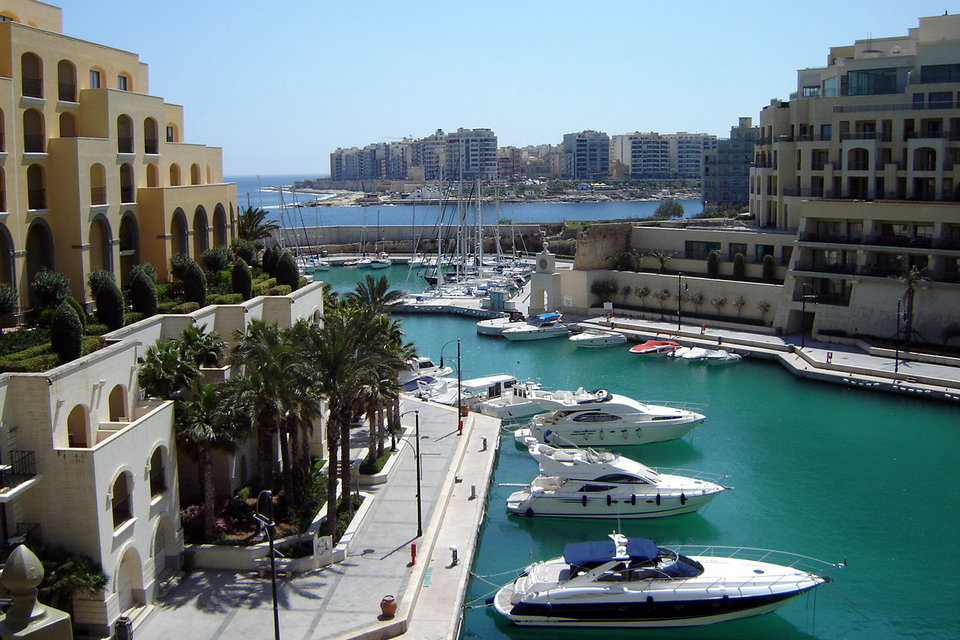Architecture of Malta


Maltese architecture has been influenced by many different Mediterranean cultures and British architecture over its history. The first settlers on the island constructed Ġgantija, one of the oldest manmade freestanding structures in the world. The Neolithic temple builders 3800–2500 BC endowed the numerous temples of Malta and Gozo with intricate bas relief designs, including spirals evocative of the tree of life and animal portraits, designs painted in red ochre, ceramics and a vast collection of human form sculptures, particularly the Venus of Malta. These can be viewed at the temples themselves (most notably, the Hypogeum and Tarxien Temples), and at the National Museum of Archaeology in Valletta. Malta’s temples such as Imnajdra are full of history and have a story behind them. Malta is currently undergoing several large-scale building projects, including the construction of SmartCity Malta, the M-Towers and Pendergardens, while areas such as the Valletta Waterfront and Tigné Point have been or are being renovated.
The Roman period introduced highly decorative mosaic floors, marble colonnades and classical statuary, remnants of which are beautifully preserved and presented in the Roman Domus, a country villa just outside the walls of Mdina. The early Christian frescoes that decorate the catacombs beneath Malta reveal a propensity for eastern, Byzantine tastes. These tastes continued to inform the endeavours of medieval Maltese artists, but they were increasingly influenced by the Romanesque and Southern Gothic movements. Towards the end of the 15th century, Maltese artists, like their counterparts in neighbouring Sicily, came under the influence of the School of Antonello da Messina, which introduced Renaissance ideals and concepts to the decorative arts in Malta.
The artistic heritage of Malta blossomed under the Knights of St. John, who brought Italian and Flemish Mannerist painters to decorate their palaces and the churches of these islands, most notably, Matteo Perez d’Aleccio, whose works appear in the Magisterial Palace and in the Conventual Church of St. John in Valletta, and Filippo Paladini, who was active in Malta from 1590 to 1595. For many years, Mannerism continued to inform the tastes and ideals of local Maltese artists.
The arrival in Malta of Caravaggio, who painted at least seven works during his 15-month stay on these islands, further revolutionised local art. Two of Caravaggio’s most notable works, The Beheading of Saint John the Baptist and Saint Jerome Writing, are on display in the Oratory of the Conventual Church of St. John. His legacy is evident in the works of local artists Giulio Cassarino (1582–1637) and Stefano Erardi (1630–1716). However, the Baroque movement that followed was destined to have the most enduring impact on Maltese art and architecture. The glorious vault paintings of the celebrated Calabrese artist, Mattia Preti transformed the severe, Mannerist interior of the Conventual Church St. John into a Baroque masterpiece. Preti spent the last 40 years of his life in Malta, where he created many of his finest works, now on display in the Museum of Fine Arts in Valletta. During this period, local sculptor Melchior Gafà (1639–1667) emerged as one of the top Baroque sculptors of the Roman School.
During the 17th and 18th century, Neapolitan and Rococo influences emerged in the works of the Italian painters Luca Giordano (1632–1705) and Francesco Solimena (1657–1747), and these developments can be seen in the work of their Maltese contemporaries such as Giovanni Nicola Buhagiar (1698–1752) and Francesco Zahra (1710–1773). The Rococo movement was greatly enhanced by the relocation to Malta of Antoine de Favray (1706–1798), who assumed the position of court painter to Grand Master Pinto in 1744.
Neo-classicism made some inroads among local Maltese artists in the late-18th century, but this trend was reversed in the early 19th century, as the local Church authorities – perhaps in an effort to strengthen Catholic resolve against the perceived threat of Protestantism during the early days of British rule in Malta – favoured and avidly promoted the religious themes embraced by the Nazarene movement of artists. Romanticism, tempered by the naturalism introduced to Malta by Giuseppe Calì, informed the “salon” artists of the early 20th century, including Edward and Robert Caruana Dingli.
Parliament established the National School of Art in the 1920s. During the reconstruction period that followed the Second World War, the emergence of the “Modern Art Group”, whose members included Josef Kalleya (1898–1998), George Preca (1909–1984), Anton Inglott (1915–1945), Envin Cremona (1919–1987), Frank Portelli (b. 1922-2004), Antoine Camilleri (b. 1922-2005) and Esprit Barthet (b. 1919-1999) greatly enhanced the local art scene. This group of forward-looking artists came together forming an influential pressure group known as the Modern Art Group. Together they forced the Maltese public to take seriously modern aesthetics and succeeded in playing a leading role in the renewal of Maltese art. Most of Malta’s modern artists have in fact studied in Art institutions in England, or on the continent, leading to the explosive development of a wide spectrum of views and to a diversity of artistic expression that has remained characteristic of contemporary Maltese art. In Valletta, the National Museum of Fine Arts features work from artists such as H. Craig Hanna.
Source from Wikipedia